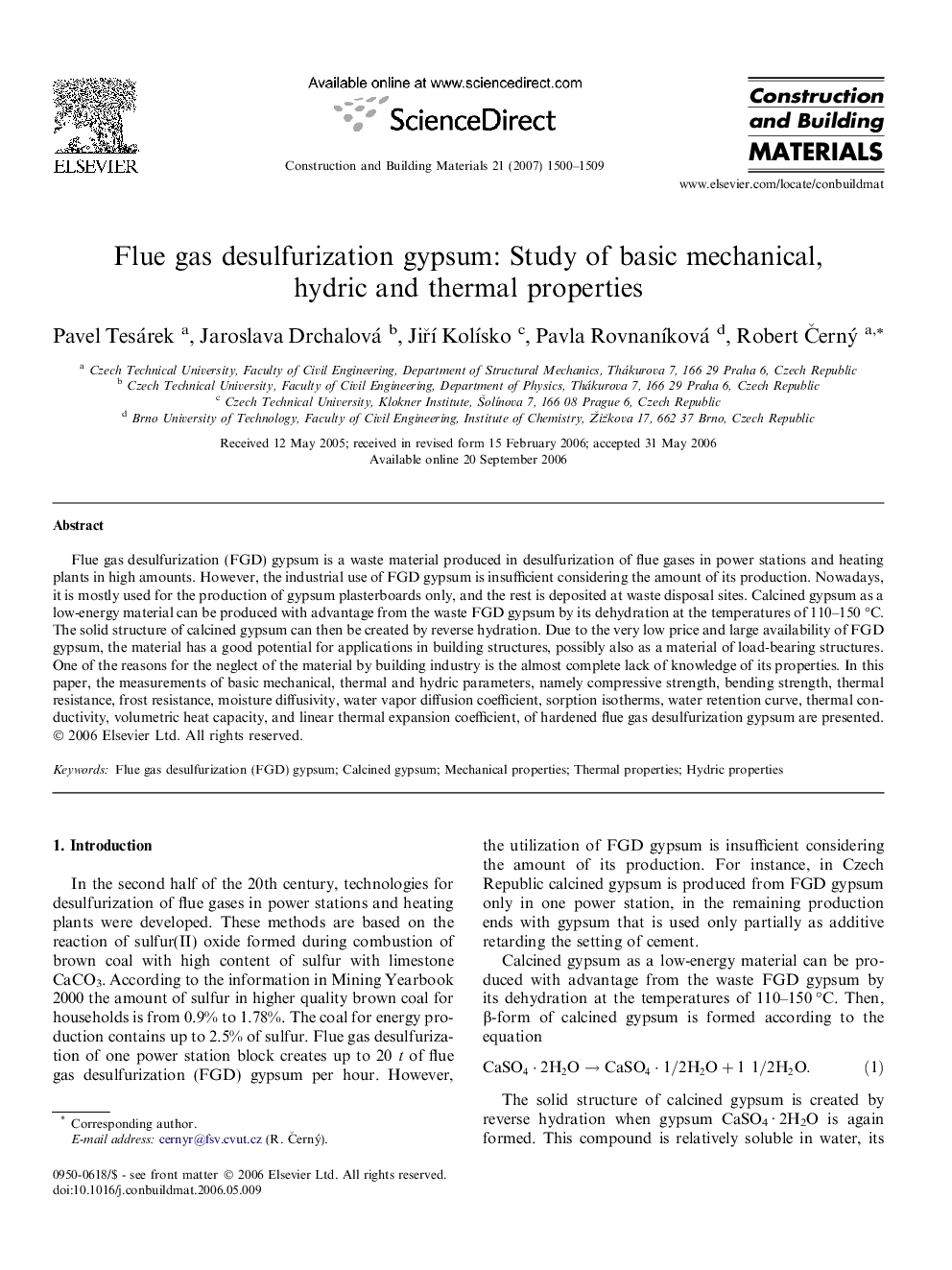| Article ID | Journal | Published Year | Pages | File Type |
|---|---|---|---|---|
| 261405 | Construction and Building Materials | 2007 | 10 Pages |
Flue gas desulfurization (FGD) gypsum is a waste material produced in desulfurization of flue gases in power stations and heating plants in high amounts. However, the industrial use of FGD gypsum is insufficient considering the amount of its production. Nowadays, it is mostly used for the production of gypsum plasterboards only, and the rest is deposited at waste disposal sites. Calcined gypsum as a low-energy material can be produced with advantage from the waste FGD gypsum by its dehydration at the temperatures of 110–150 °C. The solid structure of calcined gypsum can then be created by reverse hydration. Due to the very low price and large availability of FGD gypsum, the material has a good potential for applications in building structures, possibly also as a material of load-bearing structures. One of the reasons for the neglect of the material by building industry is the almost complete lack of knowledge of its properties. In this paper, the measurements of basic mechanical, thermal and hydric parameters, namely compressive strength, bending strength, thermal resistance, frost resistance, moisture diffusivity, water vapor diffusion coefficient, sorption isotherms, water retention curve, thermal conductivity, volumetric heat capacity, and linear thermal expansion coefficient, of hardened flue gas desulfurization gypsum are presented.
